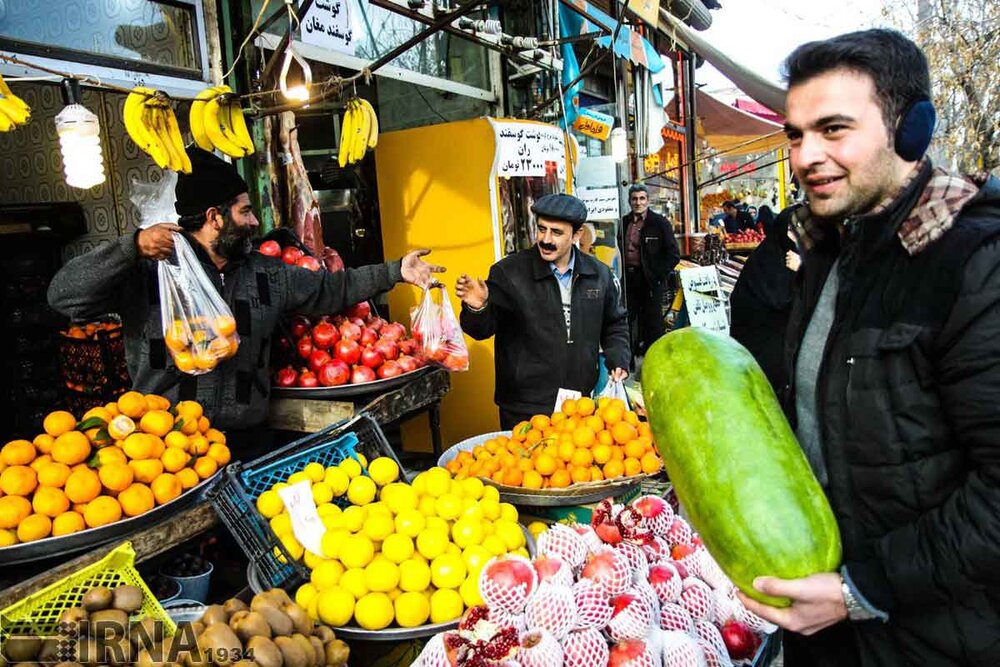Put your skates on; Yalda is to knock the door!

A new Yalda Night is approaching the hearts of Iranians no matter which part of the globe they live. On that graceful night the winter chill is vanquished and the warmth of love embraces the entire family.
The last evening of autumn and the beginning of winter is a ceremonious, auspicious time for Iranians and lovers of Iranian traditions everywhere on earth.
A peek into the bustling streets, grocery and confectionery stores show that Iranians are preparing in advance to celebrate Yalda Night, falling on December 21 this year.
You can hear her breath in the face of parents purchasing and setting out dried nuts, cookies, pomegranates and watermelons; and impatient children who are waiting for her to arrive!
It’s a time for pleasant family reunions that entails laughter, merriment, and good cheer. Hearts move closer to one another in the company of loved ones on Yalda.
Though it is not even an official holiday, Yalda still stands head and shoulders above some other ancient traditions. By the way, television and radio programs fully cater to it by airing special programs.
The reason is that it revolves around the rich, genuine Persian traditions. That’s why families are still eager to seize the moment and become fully engaged, putting their cell phones and other distractions aside.
Of all the ancient Persian festivals, only two are celebrated by Iranians worldwide -- Yalda Night (the birth of a new sun) and Noruz or Persian New Year (the birth of a new day).
Nationally called “Shab-e Yalda” or “Shab-e-Chelleh”, it literally means the night of the forty. This refers to the first forty days of winter that are often the coldest and toughest to bear.
The story of Yalda may perhaps be interpreted as a tale of courage and effort during darkness, a triumph of light and human warmth that ultimately causes the spring to bloom in hearts.
People on Yalda Night are usually served with fresh fruits and colorful Ajil (a mixture of dry fruits, seeds and nuts) in floral bowls. To Iranians, fruits are reminders of abundance in summer. Watermelon and pomegranates, as symbols of bounty, are the traditional fresh fruits of this night. It is believed that eating watermelon before the arrival of winter can immunize the body against illness.
Following a hot dinner, many people often recite poetry, narrate stories, chant, play musical instruments or just chat cozily until midnight or so.
Well, this was a glimpse of the Yalda celebration in honor of the longest night of the year!

Iran eyes UNESCO tag for Yalda
Iran seeks to register the ancient festivity of “Yalda” on UNESCO’s list of Intangible Cultural Heritage of Humanity in 2021.
According to UNESCO, Yadla ceremonies, in a best way, point to cultural diversity and human creativity, especially when one considers the wide range of the communities that celebrate it.
- Yalda, though not very common, is a female Persian name.
- In the ancient Iranian calendar, winter is divided into two parts, Chelleh Bozorg (literary meaning the bigger forty) from 22nd of December to 30th of January and Chelleh Koochak (the smaller forty), which starts from 30th January to 10th of March.
- The word Yalda, meaning birth, was imported from Syriac into the Persian language by the Syriac Christians.
- Narratives say that Yalda Night marks the birth of winter and the eventual triumph of the sun as the days grow longer.
- Ancient Iranians assumed Naneh Sarma (Old Mother Winter) begins to descend on earth by Yalda Night. Literally meaning “coldness grandma”, Naneh Sarma is a folklore character who brings in the cold of winter but also the promises of spring ahead.
AFM/MG
